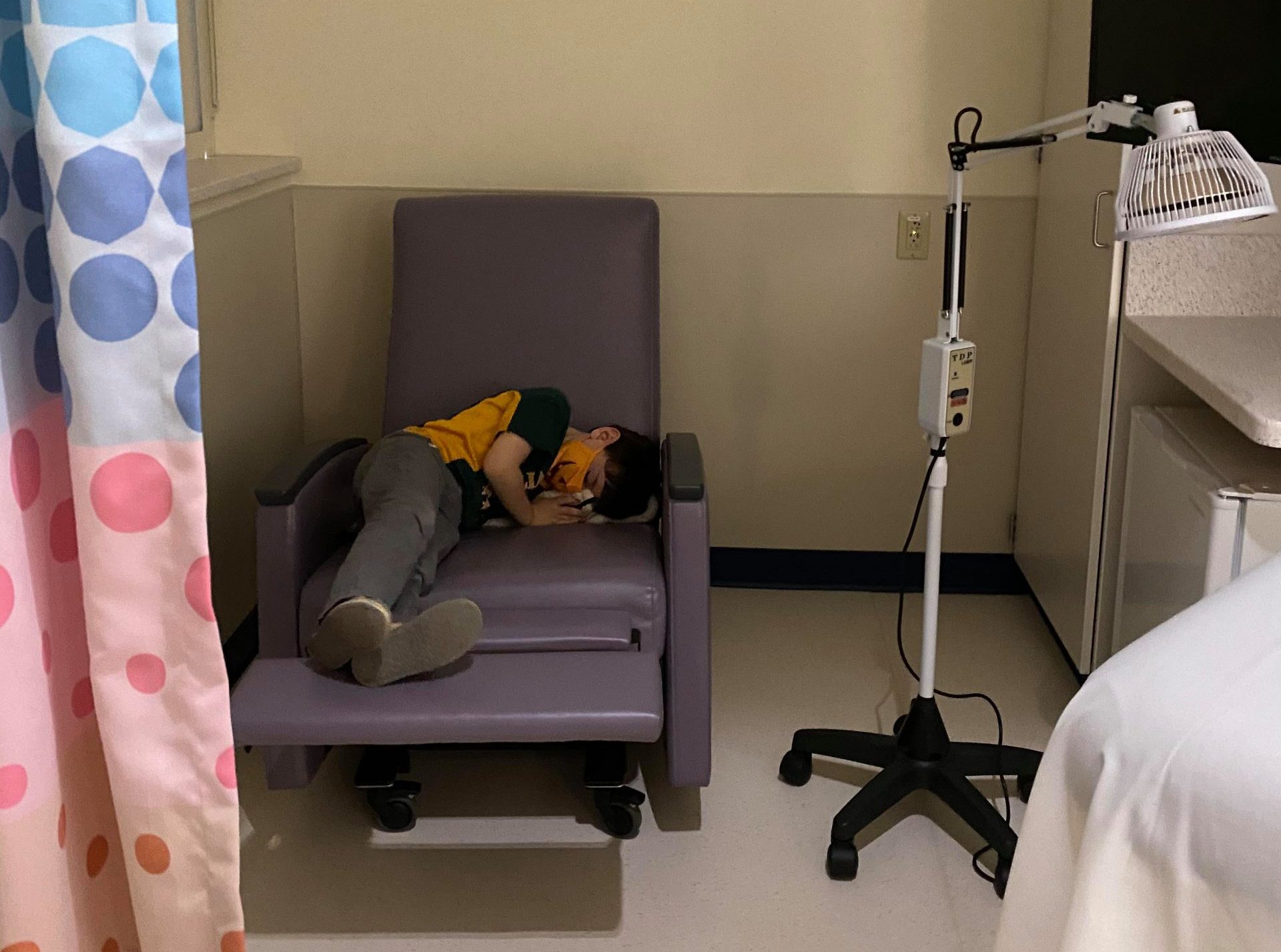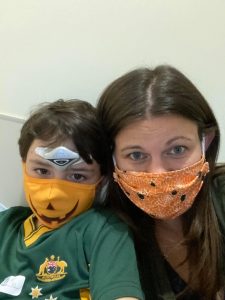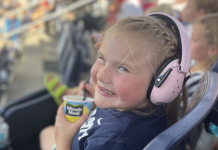The headaches started the summer before kindergarten. I blamed it on too much activity in the blazing August sun.
The headaches continued into the first few months of kindergarten. I was coming to pick him up from school at least once a week, whisking him away to the dark of his bedroom with a dose of Ibuprofen. In 20-30 minutes, he’d be bouncing around ready to play. I blamed it on the transition that all kids cope with when starting real school.
But the headaches kept coming. Several times a week and increasing in intensity to the point of vomiting.
After mentioning it to our pediatrician during this well visit, we set up an appointment with Children’s Mercy Neurology Department. We began to track his headaches, suspected triggers and symptoms.
It wasn’t unfamiliar to me, though. I see a neurologist every six months and have suffered from chronic migraines since I was a pre-teen. So does my mom, and her mom and likely many moms before them.
People often say “Oh, this is giving me a migraine” without truly understanding the condition. Migraine is a neurological condition often characterized by intense, debilitating headaches. They can also cause nausea, vomiting, slurred speech, numbness, tingling, neck pain, auras and sensitivity to light and sound.

According to the American Migraine Foundation, 8 percent of children suffer from disabling migraine. For Henry and most boys, migraines often begin around age 5 and hopefully, stop around puberty. For the girls, migraine onset is often puberty and they lessen or stop by menopause (Oh, lucky us!). Normally, migraines are managed by the pediatrician but in Henry’s case, he needs more intense interventions and monitoring.
We see his neurologist at Children’s Mercy every 3-6 months. He’s 9 now, and we’ve moved far beyond Ibuprofen that once did the trick. He takes several preventative supplements (iron, magnesium and Vitamin D) and has a cocktail of rescue meds that are constantly being tweaked to find the right mix to relieve his pain. His neurologist reviews his medicines, completes routine neurological tests (even during his telehealth appointments), and answers any of our questions.

Aside from having the right combo of medication, learning about his own body has been key to managing his migraines. That also comes with an education in self advocacy.
It is hard to explain (and I find myself having to do so over and over) that the onset of a migraine often can’t been seen on a child’s face. Sometimes the first signs aren’t even in his head. It’s also hard to explain that if the meds aren’t taken immediately, the migraine runs wild and can go on for DAYS. Each year, we coach his teachers, camp counselors or other adults that if he says his head hurts, it hurts. We don’t question him or tell him that there are only 10 minutes left until mom picks him up. He needs them immediately. That also meant training a 5-year-old that only HE knows what’s happening in his brain, and it’s up to him to advocate for his own health.
There are times though, that no matter what, a migraine strikes that will not be silenced.

![]()
For that, we have been so grateful for the Headache Treatment Center at Children’s Mercy. During the week, we can get same-day treatment when medication fails. The clinic is headache friendly with soundproof rooms and blackout shades for reduced light. A wide variety of treatments can be given including IV infusions, external trigeminal nerve stimulation, biofeedback, acupuncture and more. When the choice is heading to a loud and bright ER or suffering in pain at home, the latter is often more appealing. The Headache Treatment Center gives us the option for relief, which means missing less school and getting much needed sleep.
Tweaking pain meds and adjusting prevention strategies is a constant as his triggers and lifestyle change (hello, virtual school). We limit screen time, encourage good sleep with melatonin and push water all day long. We pray that he’ll outgrow them and live an adult life migraine free.
Our team at Children’s Mercy has given us the knowledge, strategies and education to continue to advocate for Henry for however long is needed.
This post is sponsored by Children’s Mercy
Timely, personalized headache care for your child
Are you looking for relief from today’s headache? If your child’s headache is not associated with an illness and has not responded to home treatments, you now have a better option. Children’s Mercy has started a first-of-its-kind Headache Treatment Center for kids and teens with active headaches. The Center is geared toward providing rapid relief to decrease today’s pain level in children ages 3 to 21.
Call (816) 302-1815 to schedule the next available appointment for your child. Appointments open up 48 hours in advance so we can make every effort to see you in the clinic as soon as possible. For more information about Headache Services at Children’s Mercy, visit: cmkc.link/headache.
















